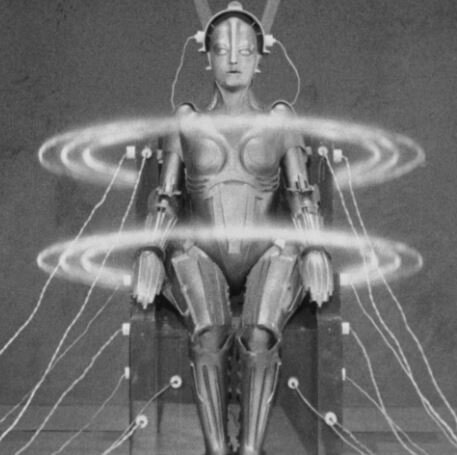Is Virtual Reality Going the Way of 3D TV?
There are some interesting parallels between the evolution of Virtual Reality technology and 3D TV.
Remember 3D TV? In 2010, it was the star of the Consumer Electronics Show, with every TV maker announcing support and showing demos. In 2012, over 41M 3D-capable television sets were sold. This year, LG and Sony announced they will cease supporting this feature in any of their sets, while Samsung had already dropped it in 2016.
Ever since Facebook’s $2B acquisition of Oculus in 2014, Virtual Reality has been hyped non-stop as the pending next computing platform. Just recently, the first wave of consumer products have finally become available and initial sales have been....disappointing. According to SuperData, in 2016 the Oculus Rift sold less than half of its forecast estimate, while the Sony Playstation VR came in at less than one third of its forecast sales. HTC’s Vive slightly exceeded its modest forecast, selling 420,000 units. Sony may have surpassed a total of 1M VR unit sales in about six months of initial sales. By contrast, its conventional (legacy) PS4 system sells 1M units a month.
Both Virtual Reality and 3D TV suffer from similar challenges:
Glasses Are Cumbersome
Nobody wanted to fiddle with 3D glasses in their living room prior to enjoying an entertainment experience. Similarly, dealing with the effort and expense of setting up a VR system only appeals to serious computer gamers, not the mainstream consumer. And let’s face it, nobody looks cool wearing the 3D glasses or VR headsets.
Hard to Demo
I have waited in too many hour-long lines at industry tradeshows in order to experience the latest Oculus demo. Any experience involving head-mounted displays or glasses becomes personal and non-shared. This makes it very difficult to educate a potential mass audience.
Technology Shortcomings
According to a 2011 study, watching films in 3D increases threefold the risk of eyestrain, headache, or trouble with vision. VR headsets have similar issues, with users reporting seizures, nausea, and dizziness. One big part of the problem is the vergence-accommodation conflict caused by tricking the eyes into perceiving depth even though the display surface is a flat screen. The technology is not yet immersive enough that you forget your surroundings.
Lack of Content (this one is probably a myth)
Whenever a new technology platform fails, “lack of content” is a popular scapegoat. But it may have been largely a myth for 3D TV. Comcast, DirectTV, and ESPN all had 3D TV channels, and even the BBC broadcast high profile events (including Wimbledon and certain 2012 Summer Olympics programs) in 3D. Amazon carries over 1000 movies in Blu-Ray 3D format. There was plenty of 3D content, just a total lack of demand for it.
Complaints about lack of content hampering VR headset sales are already coming in as well. Certainly, content is scarce at this early stage, but if the devices were more compelling, developers would be drawn to developing for them anyways. In 2007, Apple’s iPhone initially sold in similar modest numbers due to limited availability, yet developers immediately flocked to its App store when it was announced. They smelled the opportunity behind this new computing platform and early movers were quickly rewarded - only 6 months after the introduction of the App store in July 2008, Apple logged 500M app downloads!
In the case of VR, most developers have concluded that it might be best to wait for a few more hardware generations to be introduced before plunging in with the high costs of developing content.
Not Viral
Virality is a key component of consumer technology device adoption. Think about it – if you bought a telephone in, say, 1920, you were quite motivated to get your friends and family to buy a handset as well. Early television sales also prompted viral transactions – it took only a few seconds of viewing a program at a neighbor’s house before you were convinced that your family needed its own television set.
Technologies involving head-mounted displays or glasses are more personal in nature. There is no shared experience, and for VR devices, you are actively isolated from the outside world. Hence, converting consumers to appreciate this new technology is a slow and cumbersome process.
Expense (another myth?)
Another “scapegoat” circulating in the VR community is that the technology is just too expensive and adoption will become more ubiquitous when prices comes down. Certainly, if you start from scratch, getting a VR system together could cost about $3,000, including the PC, headset, and accessories. On the other hand, VR experiences are also available for free using Google Cardboard and your current smartphone.
As I saw a commercial for “24: Legacy”, announcing the availability of a free VR “prequel” episode available for the Samsung Gear VR, I wondered why I had no inclination to view that episode – even though I had all the hardware available nearby? I suffered a similar lack of inertia when Samsung announced an app that allowed you to view the 2016 Summer Olympics in VR.
I don’t think the lack of VR adoption so far is an expense issue. After all, you can have a decent experience for free using Google Cardboard, and a pretty good one with inexpensive, optically enhanced viewers like the Samsung Gear VR.
In the end, it is not an expense issue in terms of $$s, but perhaps more of an expense issue in terms of time to fiddle with setup, download apps, debug, etc. The payoff (a cool 5 minute experience) just does not seem worth the investment in time.
Enter Augmented Reality – It Already Went Viral!
Augmented Reality (AR) blends reality (what you see) with new content, such as a text pointer (“North”) or a favorite cartoon character. There are many ways to implement AR. Some versions can run as a smartphone app, superimposing information on a live video feed from the phone’s camera. More sophisticated systems involve smart glasses capable of superimposing information right in front of your eyes.
Here we go again – bulky, unfashionable glasses – the challenges for AR smart glass adoption by the consumer are similar to VR. Nobody wants to be a (Google) “Glass-hole” either. But, we have already seen a run-away success of the AR concept with Pokémon Go. Within two weeks of its release in July 2016, the game generated $160M in revenue. By September, the game had been downloaded 500M times! In contrast to any glasses-based form of entertainment, the technology:
- Demonstrated easily – just load a smartphone app and point it around your location.
- Worked – despite some early server-related glitches due to the massive adoption curve, in general the app worked well on current smartphones. Nobody got sick.
- Spread virally – every Pokemon Go user in public was an ambassador for the app, showing curious on-lookers what was going on. The app was specifically designed to take you outside to collect points in your public surroundings, making you an instant viral carrier for Pokémon Go.
The rapid success of Pokémon Go demonstrates that consumers will flock to adopt new technology under the right circumstances. For 3D TV, it just didn’t happen. AR and VR device makers should take heed not to repeat the same lessons.
Enterprise Leads the Way for Glasses?
Head-mounted devices (HMDs) may find their redemption in the enterprise. Industry is less motivated by fashion, but very interested in implementing standard operating procedures and achieving cost savings. And virality in the enterprise is far less fickle than in the consumer space – all you need to do is show that your device saves money and enterprise customers will flock to your AR device startup.
It is very likely that your local UPS driver will be sporting AR glasses for many years before the Apple “fanboys” can get a chance to fawn over the introduction of a new computing platform in the consumer space.
VR and AR in the consumer space is not dead – but it will first spread via applications that take advantage of the technology we already use: smart phones, tablets, and laptops.
View my previous Blog postings:

































